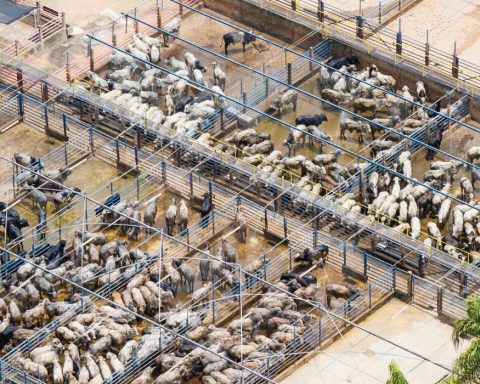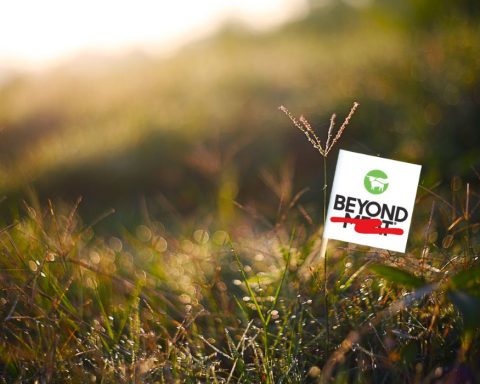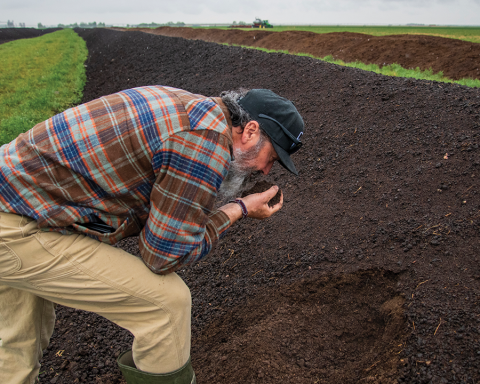On November 16, 2021, Gary Baars, of Abbotsford, British Columbia, began loading his 200 dairy cows onto a livestock trailer 20 at a time, to get them to higher ground before more rains came. His farm was still dry, but Baars wasn’t taking any chances: his cousin and neighbour, hog producer John Guliker, had to be rescued the day before when floodwaters rose “probably 10 feet deep.” Guliker and 14 workers, who had been trying to evacuate hogs, had to clamber onto a rooftop. The men were rescued by boat, but thousands of Guliker’s pigs drowned.
Guliker wasn’t the only livestock operator hammered by the record flooding that ravaged B.C. last fall. An astonishing number of farm animals – at least 628,000 chickens, 420 cows and 12,000 pigs, according to the provincial government – died in the floodwaters. In all, about 200 square kilometres of southern B.C., encompassing the low-lying, fertile Sumas Prairie, flooded with upwards of 250 millimetres of rain a day. With more than $1 billion a year in farm-gate sales, the potential impact was massive not only for Abbotsford livestock operators but for fruit, vegetable and nut producers in the region.
Around the globe, the climate crisis is ravaging livestock farms. Last summer’s heat dome across much of western and central North America shrivelled crops and pastures, forcing farmers to send cows to slaughter before they starved. In California, ranchers have struggled to evacuate their herds in the face of record wildfires that have charred millions of acres of land the last few summers. In 2018 in North Carolina, about 3.5 million poultry and 5,500 pigs perished in flooding from Hurricane Florence. The costs are adding up: flooding in Nebraska wiped out US$400 million in livestock in 2019 alone.
What’s coming into sharp focus is that today’s livestock infrastructure is built for a climate that no longer exists. Farmers are facing enormous husbandry challenges trying to keep animals safe from extreme weather that brings floods, blistering heat and drought-caused feed shortages. Will barns have to be redesigned and fitted with expensive cooling systems? Might farmers have to create evacuation plans in case of flooding or wildfires? And what happens when their farms are destroyed and insurance companies deem them too risky to insure? A warming climate also attracts invasive new species, transboundary diseases and pathogens, further threatening animal welfare.
Dan Weary, NSERC (Natural Sciences and Engineering Research Council of Canada) industrial research chair in animal welfare at the University of British Columbia, says that the November flooding saw remarkable feats of heroism as farmers tried to save animals under their care. “Farmers judge themselves in terms of being stewards for their animals,” says Weary. But the enormous loss of life and livelihoods signals that the agriculture sector must take stock in the coming months and look at redesigning farms to make them more resilient.
“This is going to be a perennial issue,” says Weary. Particularly since B.C.’s Sumas floodplain sits in what used to be Sumas Lake, before it was drained a century ago to take advantage of the fertile soil.
Sean Smukler, chair of agriculture and environment in the Faculty of Land and Food Systems at the University of British Columbia, says that if we’re not willing to invest in the costly infrastructure needed to prevent floods, we’ll have to take a different approach. That may mean shifting to flood-resilient crops, though for livestock producers in the region, the safest solution may be to move their operations altogether. It is going to be a “negotiation between society and producers, deciding whether or not we’re willing to pay the price to protect them,” says Smukler. “We need to pay more for our food if we want something that’s sustainable.”
This is going to be a perennial issue.
-Dan Weary, NSERC industrial research chair in animal welfare at the University of British Columbia
Camille Labchuk, animal rights lawyer and executive director of Ottawa-based non-profit Animal Justice, says that agricultural facilities need to be reduced in size to make rescue attempts viable, with farmers creating evacuation pathways and emergency stockpiles of food and water for the creatures under their care. Current animal numbers make this proposition questionable. Poultry facilities in B.C. have upwards of 54,000 birds per flock and seven flocks a year – an impossible number “to realistically plan to evacuate,” says Labchuk. In the United States, for example, poultry operations can house millions of birds, an even more improbable scenario.
Animal welfare laws also need to be revamped with disaster management in mind, adds Labchuk, pointing to late June’s farming disaster, when soaring B.C. temperatures killed more than 650,000 farm animals – mainly chickens packed into cages.
Livestock scientists suggest a different approach. Veterinarian Tim Kurt is the scientific program director of advanced animal systems at the Washington, D.C.–based Foundation for Food and Agriculture Research. He points to research focused on making animals more resilient so they can withstand weather extremes. The U.S. livestock industry loses upwards of US$2.36 billion annually because of heat stress: animals eat less (which impedes growth), produce less milk and become less fertile, says Kurt.
Studies are ongoing into nutritional interventions and supplements that specifically reduce heat stress in cattle.
Scientists are also looking at gene editing: identifying traits that enable cattle in places such as sub-Saharan Africa to endure drought and heat. African cows are typically inefficient milk and meat producers, and simple crossbreeding would produce an inferior animal. However, CRISPR gene editing, which allows the addition or removal of genes in living organisms, might be used to improve “the heat tolerance of the animal without impacting the milk production, which is what gives it great potential,” Kurt says.
Unlike other GMO manipulation, CRISPR uses genes from within the same species.
In 100 years, I expect there to be almost no animal agriculture on Earth.
-Lenore Newman, director of the Food and Agriculture Institute at the University of the Fraser Valley
Producers are also trying to keep their barns cool by using fans, misters, sprayers and evaporative coolers when temperatures soar. However, such measures increase water as well as energy use, bringing into question their sustainability in drought-strained regions. In an effort to convince more ranches and farms to switch to clean energy, the Rural Energy for America Program, which is administered by the U.S. Department of Agriculture, provides grants to help farmers and ranchers with energy-efficiency retrofits and renewable-energy development.
The irony is that animal production itself is fuelling climate change, creating 14.5% of global greenhouse gases, such as methane and nitrous oxide, according to the United Nations’ Food and Agriculture Organization. “Animal agriculture is the lion’s share of food’s contribution to the climate problem globally,” says Lenore Newman, director of the Food and Agriculture Institute at the University of the Fraser Valley in Abbotsford. Newman envisions a future where protein is derived from plants, lab-grown meats and cow-free dairy. “In 100 years, I expect there to be almost no animal agriculture on Earth. If we can produce meat and dairy that’s identical for a lower price, that’s better for you and the environment,” she says.
What can be done for the immediate future? Amber Itle, interim state veterinarian for Washington, says that the agriculture industry in Canada and the United States must ramp up cross-border collaboration, including emergency preparedness efforts and coordinated responses to minimize the impacts of disasters like the flooding that struck the Pacific Northwest last fall. “We need to stop thinking about our border as a line that we can’t cross,” says Itle. “We should be prepared to employ new technologies, policies and tools on farms to help prevent, prepare for and respond to animal health emergencies and mitigate the impacts.”
Henk Ovink is the special envoy for international water affairs in the Netherlands. He says that it’s not just international collaboration but an alliance with Mother Nature herself that will be needed to control the repercussions of climate change. Low-lying Netherlands has taken land out of agriculture production, compensating dairy farmers for the property and moving their operations to higher ground. “I think it’s very simple: don’t even try to control nature,” Ovink says.
Back in Abbotsford, Baars’s farm eventually ended up underwater. While he managed to get his cows out in time, it was five weeks before he could resume full dairy operations, as he had to replace milking equipment rusted by flooding. Baars is apprehensive about the future. The flood, which was supposed to be a one-in-500-year event, “could happen again in six months,” he says. He doesn’t have a plan in place in case of another one.
“We are counting on our government to upgrade the dykes in our area. If there is another flood in the future, which is very possible, we hope to get more notice and will evacuate quickly,” he says. “We have to look to politicians and light a fire and say, ‘We gotta stop this.’ I wouldn’t want to see another flood, I can tell you that.”







